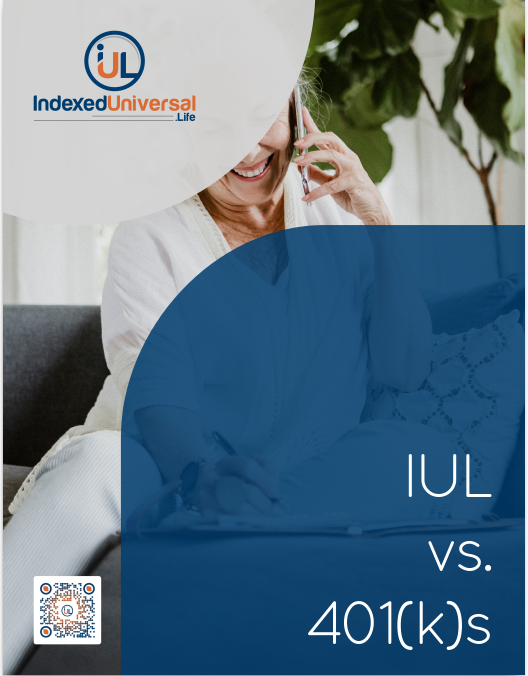
Key Takeaways
-
Indexed Universal Life (IUL) insurance offers tax-free retirement income, flexibility, and growth potential linked to market performance without direct investment.
-
To maximize the benefits and avoid pitfalls, thoroughly understand fees, caps, floors, and policy loan provisions of IUL policies.
Understanding Indexed Universal Life: Your New Retirement Companion
Indexed Universal Life (IUL) insurance is increasingly popular among Americans who want to diversify their retirement plans. Unlike traditional retirement savings accounts, an IUL policy combines life insurance protection with cash value accumulation linked to market indexes. The primary advantage? Tax-free income during retirement if properly managed. But before diving into this strategy, here are four important considerations you should thoroughly examine.
1. How IUL Actually Works: Simplified for Your Retirement Goals
Indexed Universal Life insurance isn’t your ordinary life insurance policy. It operates uniquely, blending life insurance coverage and investment elements. Here’s a straightforward breakdown of how it works:
-
Premium Payments: You pay regular premiums, part of which covers the cost of insurance, fees, and administrative charges.
-
Cash Value Growth: The remainder of your premiums is added to a cash-value account, tied to a specific market index such as the S&P 500.
-
Upside Potential: When the linked market index performs well, your policy’s cash value grows, typically up to a capped percentage defined in your policy terms.
-
Downside Protection: Conversely, if the market performs poorly, your account value doesn’t decrease due to market downturns—thanks to built-in floors.
This unique combination of growth potential and downside protection makes IUL attractive, particularly if you prefer moderate risk with steady long-term rewards.
Tax Advantages of IUL
One major draw of IUL insurance is its tax-advantaged status:
-
Tax-deferred growth: Your policy’s cash value grows tax-deferred.
-
Tax-free withdrawals: When structured correctly, you can withdraw cash tax-free during retirement through policy loans and withdrawals, significantly reducing your taxable retirement income.
-
Income flexibility: Unlike traditional retirement plans with mandatory withdrawal schedules, IUL policies offer you more flexibility about when and how much you withdraw.
2. Watch Out for Fees and Hidden Costs
While IUL insurance policies come with considerable advantages, they also involve fees and expenses that can erode your overall returns if not clearly understood and managed.
Types of Fees to Expect
Typical costs within an IUL policy include:
-
Cost of Insurance (COI): These charges cover the policy’s death benefit. COI generally increases as you age.
-
Administrative and Policy Fees: These include the operational costs to maintain your policy and are typically deducted monthly.
-
Surrender Charges: Early withdrawal or cancellation can result in significant surrender charges, particularly within the first 10-15 years of the policy.
Understanding these fees is crucial. Carefully evaluate them to ensure they won’t significantly impact your expected retirement income.
How to Minimize Fees
-
Opt for lower-fee policies by comparing multiple offerings.
-
Avoid frequent policy withdrawals or early cancellations to prevent surrender charges.
-
Regularly review policy statements to monitor costs and ensure transparency.
3. Understanding Caps and Floors: Know Your Boundaries
IUL policies utilize “caps” and “floors” to balance growth potential and risk.
Cap Rates Explained
-
What is a cap? It’s the maximum rate of return credited to your policy based on the index’s performance during a defined period.
-
For instance, if your policy has an annual cap of 10% and the index earns 14%, your policy’s cash value growth will only be credited with a 10% gain for that period.
Caps help insurers manage risk but may limit your gains during particularly strong market performances.
Understanding the Floors
-
Floors are protective features ensuring your cash value doesn’t decline due to negative market returns.
-
Commonly, floors are set at 0%, meaning you won’t lose money even if the market suffers significant losses.
Choosing the Right Balance
Selecting an IUL policy involves striking a balance:
-
Higher caps typically come with increased fees or lower floors.
-
Consider your risk tolerance and retirement objectives when choosing a policy with suitable caps and floors.
4. Leveraging Policy Loans: Smart Retirement Income Planning
One of the primary attractions of IUL policies is their ability to generate tax-free retirement income through policy loans. But how exactly do these loans work?
How Policy Loans Provide Tax-Free Income
-
The IRS views policy loans as debt, not income. Thus, they aren’t taxable as long as the policy remains active.
-
Loans taken against your policy’s cash value don’t require immediate repayment. Any unpaid loans are deducted from the death benefit when the policyholder passes away.
Key Considerations About Policy Loans
-
Interest Rates: Policy loans usually accrue interest, which can reduce your cash value and potentially your policy’s death benefit.
-
Loan Management: Excessive borrowing without careful management can risk policy lapse if your cash value becomes insufficient to cover fees and insurance costs.
Best Practices for Policy Loans
-
Regularly monitor your policy’s cash value to ensure sustainability.
-
Strategically plan your loan withdrawals to supplement retirement income while preserving your death benefit and policy health.
-
Always consult a financial advisor to create a tailored strategy based on your retirement income needs.
Is IUL Right for Your Retirement Portfolio?
Indexed Universal Life insurance isn’t a one-size-fits-all solution. Its suitability largely depends on your financial situation, retirement goals, and risk tolerance. Here are essential factors to help you evaluate:
-
Your Current Age: Younger individuals may benefit more due to extended accumulation time, but it’s never too late to start if structured correctly.
-
Your Income and Tax Bracket: Those in higher tax brackets can potentially realize greater tax advantages from tax-free withdrawals.
-
Overall Retirement Strategy: IUL should complement, not replace, traditional retirement accounts and investments.
Ideal Candidates for IUL Policies
You may find IUL appealing if you:
-
Seek tax diversification in retirement.
-
Want flexibility in retirement income.
-
Prefer downside market protection.
-
Are comfortable managing a more complex financial product.
Avoiding Common Pitfalls
Indexed Universal Life insurance can be beneficial, but there are pitfalls to sidestep:
-
Underfunding Your Policy: Insufficient premiums could cause a lapse.
-
Misunderstanding Projections: Initial illustrations may assume ideal market conditions. Regular reviews and conservative estimates are recommended.
-
Ignoring Market Fluctuations: Understand how volatile market years could affect your policy.
Always proactively address these potential issues by regularly reviewing policy performance and adjusting your strategy as needed.
Making Indexed Universal Life Work for Your Future
Indexed Universal Life insurance can be a valuable tool for building tax-free retirement income, but it’s important to understand how it works fully. By keeping fees transparent, setting realistic expectations regarding caps and floors, strategically managing policy loans, and aligning IUL with your broader retirement strategy, you can significantly enhance your retirement planning effectiveness.
For personalized guidance and to determine if Indexed Universal Life insurance fits your financial goals, reach out to a qualified financial advisor today.





